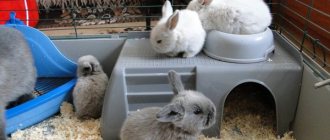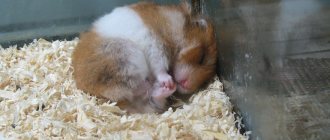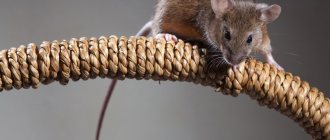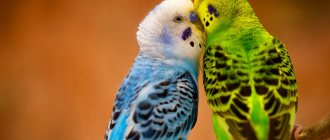Syrian hamster: description
The Syrian hamster is the result of crossings of various species, and quite rare, wild hamsters. This animal was accidentally discovered at one time in Syria. Adult individuals are characterized by medium size.
Adult specimens grow to a maximum length of 13.5 cm, while their tail is only one and a half centimeters long. The maximum weight of adults is about 250 grams, with females being slightly larger than males. Despite this, Syrian hamsters have a short but strong body.
The animal's coat consists of soft and fairly thick fur, which is painted in golden tones. The characteristic habitats of these animals in nature are the areas adjacent to the city of Aleppo, as well as the eastern territories of Turkey.
Interesting fact! The front paws of this animal have four toes, and the hind paws are armed with five toes.
The muzzle is characterized by the presence of rounded shapes, and as for the ears, they are small, as is the tail, which is barely noticeable due to the rather thick coat. There are both long-haired and short-haired species.
How long do Syrian hamsters live?
As far as we know, regardless of their habitat, be it the natural environment or being in captivity, hamsters live no more than 3 years.
Under certain conditions, by providing the animal with balanced feed, you can extend the life of your pet, although only slightly.
Domestic hamsters. Funny Syrian hamster.
Care and maintenance of Syrian hamsters
Syrian hamsters are very popular both in our country and around the world. Most likely, this is due to the unpretentiousness of maintenance, the resistance of the hamsters’ immunity, as well as their attractive appearance.
How many hamsters to get
The peculiarities of keeping them are that these animals prefer to lead an isolated lifestyle, while becoming attached to a certain territory, which they fearlessly defend. You need to know this in order to decide on the number of animals you plan to have. Therefore, they cannot be kept even in pairs, not to mention entire groups of animals. At the same time, it should be noted that there is a type of social hamsters - these are Roborovsky hamsters, which can be kept in whole groups without any problems.
Selection and filling of the cage
Syrian hamsters are relatively large in size, so a small cage is not suitable for keeping such a pet. In addition, the size of the cage must be such that it can accommodate a wheel with various labyrinths, as well as other accessories.
The best option can be considered a cage with dimensions of 37x27 cm and a height of about 36 cm. If the cage has two floors, then this is even better, since it is more convenient and more comfortable for the animal.
Features of the cell include:
- It is not necessary that the cage have several floors, but the main thing is that its dimensions are optimal.
- Dimensions should not be less than 50x30 cm.
- If the cage is too small in size, the animal may suffer from lack of movement, which leads to obesity.
- The second floor should be located at least 30 cm from the bottom of the cage.
- The door dimensions should be optimal, but not small.
- The distance between the rods is no more than 1 cm.
- It is better to get a cage that has a solid tray rather than a mesh one.
The hamster's home should be equipped with a special wheel, which will act as a gymnastic apparatus, and the bottom should be filled with sawdust, which can absorb moisture, as well as foreign odors.
Important point! The more game elements there are in the cage, in the form of a wheel, various manholes, steps and ladders, the more active the pet will behave.
Do not cover the bottom of the cage with cotton wool or paper. An excellent play element for a hamster in his home is a wooden driftwood with a smooth surface.
Rules of care and hygiene
Keeping a pet hamster requires deep cleaning of the entire home once a week. To do this, the upper part of the cage is removed and any remaining food, as well as bedding, is removed. As a daily activity, it is advisable to carry out partial cleaning, replacing the remaining feed and bedding that has become unusable.
After general cleaning, disinfection measures are mandatory using safe substances, after which the cage is wiped dry with a cotton cloth or paper towel. In addition, all additional elements of the cage, including bowls and drinking bowls, require regular washing. Cleanliness is the key to your pet’s health.
What to feed your Syrian hamster
Proper keeping of rodents such as Syrian hamsters at home is to provide the animal with a balanced diet, including various treats.
The use of ready-made, purchased food rations can be considered an ideal option, since they contain a sufficient amount of nutrients that are so necessary for the normal functioning of hamsters. In this case, you need to ensure that the feed is given in no more than the required portions.
The feed should contain:
- Proteins – no more than 23 percent.
- Up to 6 percent fat.
- Within 10 percent fiber.
The hamster's main food products are solid grains in the form of wheat, oats and millet. If a pet has not finished eating and left food in the feeder, it must be removed immediately so that the pet cannot be poisoned by food that has become unusable.
It is important to know! Products such as citrus fruits, sunflower seeds (seeds), cabbage, chocolate and a number of other sweet products, including dairy and fermented milk products, with the exception of cheese, are contraindicated for feeding these animals.
As a rule, rodents' teeth grow throughout their lives, so it is necessary to create conditions for the animal to grind them down. To do this, the hamster is given branches of various fruit trees, such as apple and cherry, and also includes foods such as apples, carrots, persimmons, zucchini, turnips and raspberries in the diet.
Standards for keeping a Syrian hamster
Health and disease prevention
Pet hamsters may suffer from:
- For the appearance of abscesses.
- For dental problems.
- For obesity.
- For baldness.
- For inflammation of the “sacs”.
- On a “wet” tail.
- For herpes.
- For the spread of E. coli.
- For “false rabies” or Aujeszky's disease.
- For trichomoniasis.
- For conjunctivitis.
First of all, you should pay attention to the following symptoms:
- The appearance of sharp and unmotivated aggressiveness.
- The appearance of breathing problems.
- Complete apathy.
- Moisture fur and matted wool.
- The appearance of bald patches.
- The appearance of various wounds, swellings or ulcers.
- Loose or too dry stools that have an unusual color or unpleasant odor.
The owner should pay attention to the fact that the hamster is constantly trembling, and also to the fact that the pet is actively scratching its skin until wounds appear.
In any case, you should not self-medicate or try to establish a diagnosis yourself, which can only be done by a specialist. As a rule, many ailments manifest themselves due to poor care and maintenance, as well as the lack of a balanced diet. It is also necessary to pay attention to the conditions in which the cage is located, whether the room is well ventilated, and whether there are any drafts.
Reproduction and offspring
By the time of fertilization, the female must be at least 4 months old, and the male must be at least 3 months old. Successful mating is only possible if the female's estrus period is accurately determined, which occurs at intervals of 5 days. During this period, they take a female and a male and place them in a separate and very spacious cage.
After fertilization, the female carries her offspring for 18 days. After this period, from 4 to 15 small hamsters may be born. Before the birth process, the cage is thoroughly cleaned, the bedding is completely changed, and a sufficient amount of food is poured into the feeder.
After childbirth, especially in the first days, it is undesirable not to disturb the female and her offspring. After birth, small hamsters feed only on mother's milk for a month.
During the period of feeding the offspring, as well as during the period of feeding with milk, the female’s diet should be enriched with:
- Due to protein products.
- Using boiled egg yolk.
- Due to low-fat cottage cheese.
- Using boiled chicken meat.
After birth, in no case should the cubs be touched with your hands, otherwise the female will be able to eat all her offspring if she senses the presence of foreign odors.
In addition, during this period it is advisable to place the cage in a fairly dark place, ensuring complete peace for the female and offspring. You can start breeding hamsters after they have lived for one month and one week.
Habits of a dwarf hamster
Hamsters have a unique character. They may not get along with their relatives. Representatives of the breed have some behavioral characteristics that need to be studied before getting such a pet.
Rodent character
Campbell hamsters are stubborn. Some individuals may be uncommunicative and do not tolerate the company of even their owners well. It is important that the animal has contact with humans from an early age.
If the rodent is handled correctly, without frightening or causing pain, it will quickly get used to its owners. However, if the hamster senses danger, it will bite.
Not only pain, but also sudden movements and sounds can provoke a rodent. In addition, the absence of a mineral stone in the cage, on which the animal grinds its teeth, can contribute to an increase in the aggressiveness of the hamster.
An attack is also possible if the owner smells edible. If a dwarf rodent is in contact with a person from an early age, it will favor being held and stroked.
Activity and lifestyle
Hamsters are active and playful. When having fun, they often use the wheel, jump up and rake the litter. These animals have poor eyesight, but well-developed hearing and sense of smell.
They are nocturnal. During the period of night activity, the hamster’s body temperature rises to +40 °C, and in the morning drops to +20 °C. During the day, the rodent hides in a house or other shelter and sleeps. In winter, hamsters do not sleep, but with the arrival of autumn they begin to stock up.
During the day, rodents lead an inactive life.
Buying Syrian hamsters
Such an animal is sold in pet stores, through advertisements or on the market. At the same time, many who want to purchase a Central Asian hamster on the market should be warned, since there is no guarantee of purchasing a healthy animal.
Short-haired types of Syrian hamsters can cost around 300 rubles maximum, while long-haired types are more expensive and will have to pay up to 600 rubles for them.
Buying a Hamster New Pet Syrian Hamster First Day | Elli Di Pets
Owner reviews
Syrian hamsters are characterized by having a sociable and friendly character, so they prefer to be in constant contact with their owner.
Such a pet requires constant care, as well as unobtrusive love, since excessive attention can lead the animal to stress, and subsequently to the manifestation of a number of ailments that are difficult to deal with.
Important point! According to many experienced owners, it is enough for Syrian hamsters if you handle them no more than 3 times a day, for 15 minutes, no more.
These animals, despite their mobility and curiosity, are mainly active in the dark. It follows from this that it is better to choose evening hours to communicate with your pet.
Syrian hamsters, due to their ease of care and maintenance, are very popular. They are typically one of the first pets children encounter. Since this animal does not require special care and maintenance, and its character is quite friendly and flexible, all family members and especially children quickly become attached to this pet.
Entertainment and exercise equipment
In addition to the basic objects for life, the cage must contain various ladders, tunnels, hammocks, running wheels, etc. It is very important for rodents to meet their daily activity requirement, because in nature they run constantly (about 5 kilometers per day). The most important thing is to purchase a running wheel. With its help, you can not only help your baby run around to his heart's content, but also provide yourself with silence for several hours a day, because the baby will not chew on the bars of the cage. Choose the wheel size as large as possible, at least 16 cm in diameter. It will cost you 250 - 500 rubles. Instead of a wheel, you can buy a walking ball for traveling around the room for 200-300 rubles. Other items can easily be made with your own hands, but they can also be purchased in stores. Depending on their appearance and functionality, prices will be completely different, but also somewhere from 150-200 rubles.











